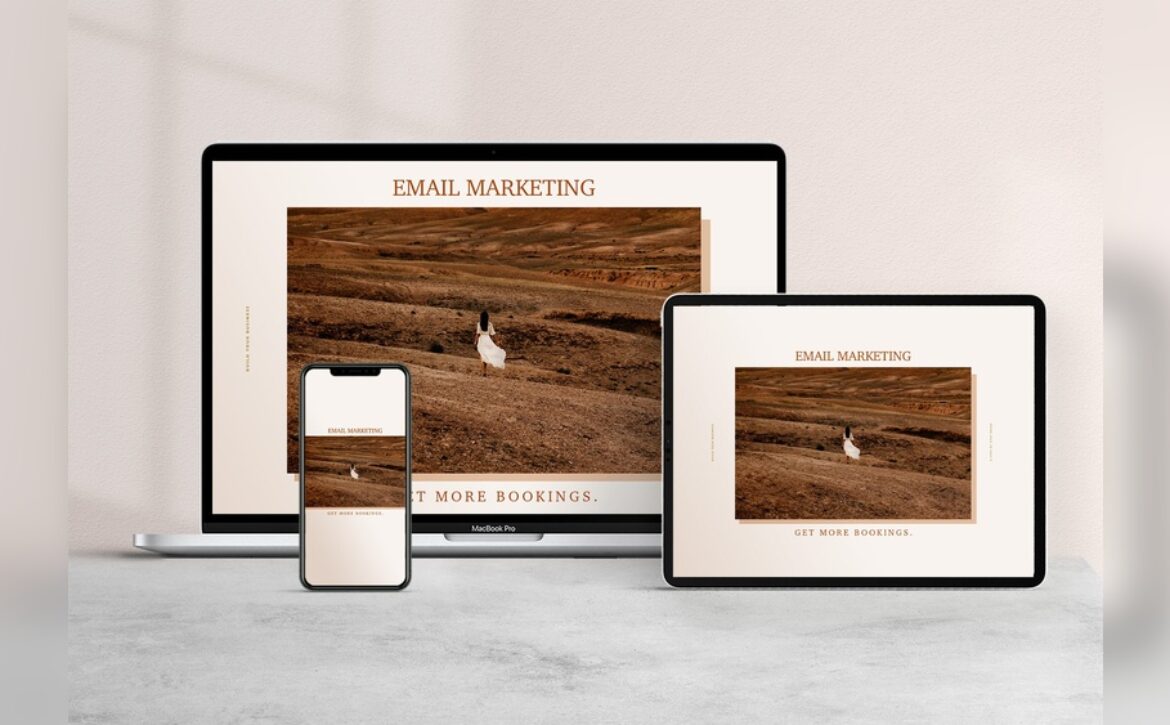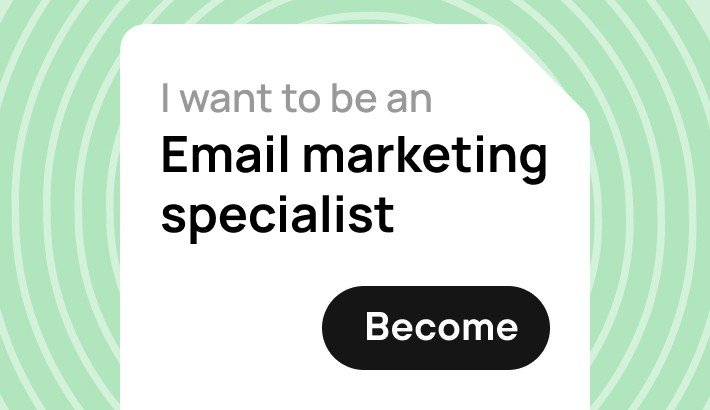
How to Become an E-Mail Marketing Pro: Step-by-Step Guide
Imagine having the power to reach thousands of potential customers with just a few clicks. E-mail marketing can transform your business, boost your brand, and engage your audience like never before.
But how do you harness this power effectively? You might wonder if it’s all about catchy subject lines or the right timing. The truth is, becoming an e-mail marketing expert involves a blend of strategy, creativity, and understanding your audience on a deeper level.
Are you ready to unlock the secrets of successful e-mail campaigns and skyrocket your business growth? Stay with us as we dive into the steps and insights that will turn you into an e-mail marketing pro. Your path to mastering this essential digital tool starts here.

Crafting Effective Email Campaigns
Crafting effective email campaigns involves understanding your audience and creating engaging content. Use clear language and eye-catching visuals to capture attention. Personalize messages to increase connection with readers. Consistent scheduling keeps your audience engaged and builds trust over time.
Crafting effective email campaigns is an art and a science. It involves understanding your audience, setting clear goals, and delivering compelling content that sparks interest. You don’t just want to send emails; you want to create connections and drive action.
Understanding Your Audience
Knowing who you’re talking to is crucial. Consider what your audience cares about and what challenges they face. Are they looking for tips, deals, or inspiration? When you know their preferences and pain points, you can tailor your message to resonate with them. Think about how you feel when you receive a personalized email that seems to speak directly to you. It grabs your attention, right? Aim to make your audience feel the same way.
Setting Clear Objectives
Before you type a single word, define what you want to achieve. Is it to boost sales, increase website traffic, or build brand awareness? Having a clear objective keeps your campaign focused and effective. Imagine planning a trip without a destination in mind. It’s easy to get lost. The same goes for email marketing. Clear goals guide your strategy and help measure success.
Creating Compelling Content
Content is king, but only if it’s compelling. Use engaging subject lines that pique curiosity and prompt opens. Keep the message concise and relevant, focusing on benefits rather than features. Consider using bullet points or numbered lists to break up text and make your email scannable. An image or two can also enhance your message, but ensure they don’t overshadow the text. A story from my early days in email marketing: I once crafted an email campaign for a small bakery. Instead of listing product features, I shared a customer’s experience of how our bread transformed their family breakfast. The response was overwhelming, proving the power of storytelling. Are your emails engaging enough to prompt a response? Always ask yourself this before hitting send.
Building Your Email List
Building your email list is a crucial step in mastering email marketing. Without a list, your marketing efforts have nowhere to go. Think of your email list as your direct line to potential customers who are already interested in what you have to offer. Growing this list requires strategy, creativity, and a bit of personalization. Let’s dive into how you can effectively build your email list.
Utilizing Signup Forms
Signup forms are the gateway to your email list. They should be easy to spot and simple to fill out. Place them strategically on your website, such as on the homepage, blog posts, or landing pages. Ensure the form captures essential information like name and email address while staying minimal. Use clear, enticing language that encourages visitors to sign up. Consider adding a brief statement on what subscribers will gain, like updates, exclusive deals, or insider tips.
Leveraging Social Media
Your social media platforms are powerful allies in growing your email list. Share links to your signup forms regularly. Create engaging posts that highlight the benefits of joining your email list. Use stories or live sessions to talk directly with followers, explaining the value they will receive. Run contests or giveaways that require email sign-up for entry. Engaging with your audience on social media can quickly translate into new subscribers.
Offering Incentives
Who doesn’t love a good incentive? Offering something valuable in exchange for an email address can significantly boost your sign-up rates. Consider offering discounts, free shipping, or a downloadable guide. Incentives give potential subscribers a reason to join your list. Ensure the offer is relevant to your audience and deliver on your promise promptly. A story from my marketing days: a simple ebook download tripled our sign-ups in a month. What incentive could you offer to motivate your audience?
Designing Engaging Emails
Designing engaging emails is crucial for successful e-mail marketing. A well-designed email grabs attention, conveys your message clearly, and encourages action. It combines aesthetics with functionality, ensuring your audience remains interested and informed. Let’s explore key elements for crafting compelling emails.
Choosing The Right Template
Start with a template that suits your brand style. Templates provide structure and consistency. Select one that matches your message and audience. Simplicity is key. Avoid cluttered designs that can confuse recipients. Aim for a clean and professional look. Customize it to reflect your unique brand identity.
Incorporating Visual Elements
Visuals can enhance engagement. Use images sparingly to complement text. Quality matters, so choose high-resolution images. Infographics can simplify complex information. Consider colors that align with your brand. They should evoke the right emotions. Keep your design balanced and eye-catching. Avoid overwhelming your readers.
Optimizing For Mobile Devices
Ensure your emails look great on mobile devices. Many users check emails on phones. Responsive design is essential for readability. Keep sentences short and paragraphs concise. Use buttons instead of links for easier navigation. Test your emails on various devices. Ensure images and text display correctly.

Personalization Techniques
Email marketing is a powerful tool for connecting with your audience, but the real magic happens when you personalize your approach. Personalization techniques can transform a generic email into a message that feels tailor-made for each recipient. Let’s dive into some practical methods to make your emails more personal and impactful.
Segmenting Your Audience
One size does not fit all in email marketing. Imagine receiving a message that perfectly matches your interests; that’s the goal of audience segmentation. By dividing your subscribers into smaller groups based on characteristics like age, location, or purchase history, you can send targeted emails that resonate more deeply.
Consider this: you run an online store selling various products. Segment your audience into groups like tech enthusiasts, fashion lovers, or eco-conscious buyers. Each group will receive emails tailored to their preferences, increasing the likelihood of engagement.
Ask yourself, are you speaking directly to your audience’s interests and needs? Segmentation helps ensure your emails are relevant, making your subscribers feel valued and heard.
Using Dynamic Content
Dynamic content allows you to personalize emails even further by changing elements within the email based on subscriber data. This technique enables you to deliver unique experiences without creating multiple emails from scratch.
Imagine sending an email featuring the latest deals. With dynamic content, the products shown can vary depending on the recipient’s past purchases or browsing behavior. This personalized touch can significantly enhance engagement.
Think about the last email you received that felt like it was speaking directly to you. How did it make you feel? Dynamic content can evoke that same reaction from your audience, boosting your email marketing effectiveness.
Crafting Personalized Subject Lines
The subject line is your first impression. Personalized subject lines can dramatically increase open rates by making your emails stand out in crowded inboxes. A simple tweak can make your message feel personal and inviting.
Suppose you’re promoting a sale; instead of a generic “Huge Discounts Await,” try “Sarah, Discover Discounts on Your Favorite Items.” Using the recipient’s name and referencing their interests can spark curiosity and entice them to open the email.
Reflect on the subject lines you typically use. Are they compelling enough to grab attention? Personalized subject lines are a strategic way to make your audience feel special and motivated to engage further.
Automating Your Campaigns
Automating your campaigns simplifies e-mail marketing efforts. Set up tailored messages to reach your audience effectively. Schedule emails to save time and increase engagement.
Email marketing automation can transform the way you engage with your audience. Imagine connecting with your subscribers without manually sending each email. Automation allows you to do just that, freeing up your time and ensuring your messages reach the right people at the right time. It’s like having a personal assistant for your marketing tasks. Let’s dive into how you can effectively automate your campaigns to boost your email marketing efforts.
Setting Up Auto-responders
Auto-responders are your first step towards efficient email automation. These are pre-written emails that automatically go out when someone takes a specific action, like signing up for your newsletter. Start by crafting a welcome email that introduces your brand and sets expectations. Personalize these emails to make them more engaging. Address your subscriber by name and mention how they joined your list. This shows that you value their interest and are ready to offer relevant content. Test different versions of your auto-responder emails. This helps you understand what resonates with your audience. Pay attention to open rates and click-through rates to see what works best.
Creating Drip Campaigns
Drip campaigns are a series of emails sent automatically on a schedule. Think of them as a storytelling sequence that gradually engages your subscribers. Start by outlining a clear goal for your campaign, like educating new subscribers or promoting a product. Break down the information into bite-sized emails. Each email should build on the last, keeping your audience intrigued. Use engaging subject lines to maintain interest and encourage opens. Evaluate the performance of your drip campaigns regularly. Track metrics such as engagement rates and conversions. Adjust your strategy based on this data to improve results.
Scheduling Email Sends
Scheduling your emails ensures they land in your subscribers’ inboxes at the right time. Use your email marketing platform’s scheduling feature to plan your campaigns in advance. This helps you maintain consistency and reach your audience when they’re most active. Consider time zones and your audience’s habits. If you know most of your subscribers check their emails in the morning, schedule your sends accordingly. This increases the chances of your emails being read and acted upon. Review your email schedule periodically. Analyze when your emails get the most engagement and adjust your timings. This way, you can continuously optimize your campaigns for better results. By automating your email marketing, you can focus on crafting compelling content and building relationships with your audience. What part of your campaign are you excited to automate next?
Analyzing Campaign Performance
Explore the essentials of analyzing campaign performance to enhance e-mail marketing strategies. Focus on open rates, click-through rates, and subscriber engagement to understand audience preferences. Effective analysis helps refine future campaigns, ensuring better reach and higher engagement.
Analyzing campaign performance in email marketing is crucial. It helps refine strategies and achieve better results. By understanding metrics, marketers can make informed decisions. Tracking open rates, click-through rates, and conversion metrics offers insights. These metrics guide future campaigns and enhance effectiveness.
Tracking Open Rates
Open rates reveal the effectiveness of subject lines. They show how many recipients opened the email. A low open rate may indicate an unappealing subject line. It could also suggest poor timing or irrelevant content. Analyze open rates regularly. Adjust strategies based on findings. Use A/B testing to identify what works best.
Assessing Click-through Rates
Click-through rates measure engagement with email content. They indicate interest in your message. A high rate suggests compelling content and clear calls to action. If rates are low, reevaluate email design and message clarity. Ensure links are easy to find and click. Test different layouts and wording to improve results.
Evaluating Conversion Metrics
Conversion metrics show the effectiveness of emails in driving actions. They measure how many recipients completed desired actions. This could be making a purchase or signing up for a service. A low conversion rate might signal a disconnect between email content and landing page. Ensure consistency in messaging. Optimize landing pages for better conversions. Monitor metrics to understand audience behavior and preferences.
Staying Compliant With Regulations
Navigating e-mail marketing regulations involves understanding key laws like GDPR and CAN-SPAM. Regularly update your subscriber list and obtain explicit consent. Always include an easy opt-out option to keep communication ethical and compliant.
Staying compliant with regulations is crucial for anyone venturing into email marketing. It’s not just about sending emails; it’s about sending them responsibly. Failing to follow the rules can lead to hefty fines and damage your reputation. So, how do you ensure your email marketing efforts are compliant?
Understanding Gdpr
The General Data Protection Regulation (GDPR) is a game-changer for marketers. If you’re targeting EU citizens, you need to understand this regulation. It requires you to obtain explicit consent from users before sending marketing emails. Consider adding a clear opt-in form on your website. Make sure it’s straightforward and easy to understand. You should also provide information about how you’ll use their data. Transparency builds trust and keeps you compliant.
Following Can-spam Rules
The CAN-SPAM Act sets the rules for commercial emails in the United States. It’s all about giving recipients the right to refuse emails and ensuring your messages are not misleading. Start by including a visible unsubscribe link in every email. This link should be easy to find and simple to use. You should also ensure your subject lines aren’t deceptive. Be honest and direct about the content of your emails. Take a moment to think: would you appreciate receiving such an email?
Ensuring Data Privacy
Data privacy is not just a regulation; it’s an ethical obligation. You’re responsible for safeguarding your subscribers’ information. Use secure servers and encrypt sensitive data to protect it from breaches. Regularly audit your data collection practices. Are you collecting more information than necessary? Keep only what you need and delete outdated data. Your subscribers will appreciate the care you take in protecting their privacy. Maintaining compliance is not just about avoiding penalties; it’s about fostering trust with your audience. Are you prepared to ensure your email marketing is legally sound and ethically responsible?
Frequently Asked Questions
What Skills Are Needed For Email Marketing?
To excel in email marketing, you need strong copywriting skills, analytical abilities, and an understanding of audience segmentation. Familiarity with email marketing tools and best practices is crucial. Creativity and attention to detail also play a significant role in crafting engaging campaigns that resonate with your audience.
How Can I Start A Career In Email Marketing?
Begin by learning the basics through online courses and tutorials. Build a portfolio with sample campaigns. Networking with industry professionals can help you find job opportunities. Consider internships or entry-level positions to gain practical experience and hone your skills further.
What Tools Are Essential For Email Marketers?
Email marketers often use tools like Mailchimp, Constant Contact, and AWeber. These platforms help manage subscriber lists and design campaigns. Analytics tools like Google Analytics are essential for measuring campaign performance. Familiarity with these tools will streamline your workflow and improve campaign effectiveness.
How Do I Build An Email Subscriber List?
To build a subscriber list, offer valuable content in exchange for email sign-ups. Use opt-in forms on your website and social media. Ensure your content is relevant and engaging. Consistently deliver quality content to retain and grow your subscriber base over time.
Conclusion
Becoming an email marketing expert takes time and effort. Start by learning the basics and tools. Practice regularly to build skills. Analyze successful campaigns for insights. Stay updated with industry trends. Test different strategies to see what works best. Keep your audience’s needs in mind always.
Use clear and engaging content. Consistency is key to success. Remember, patience and persistence pay off. With dedication, you can achieve your goals in email marketing.





